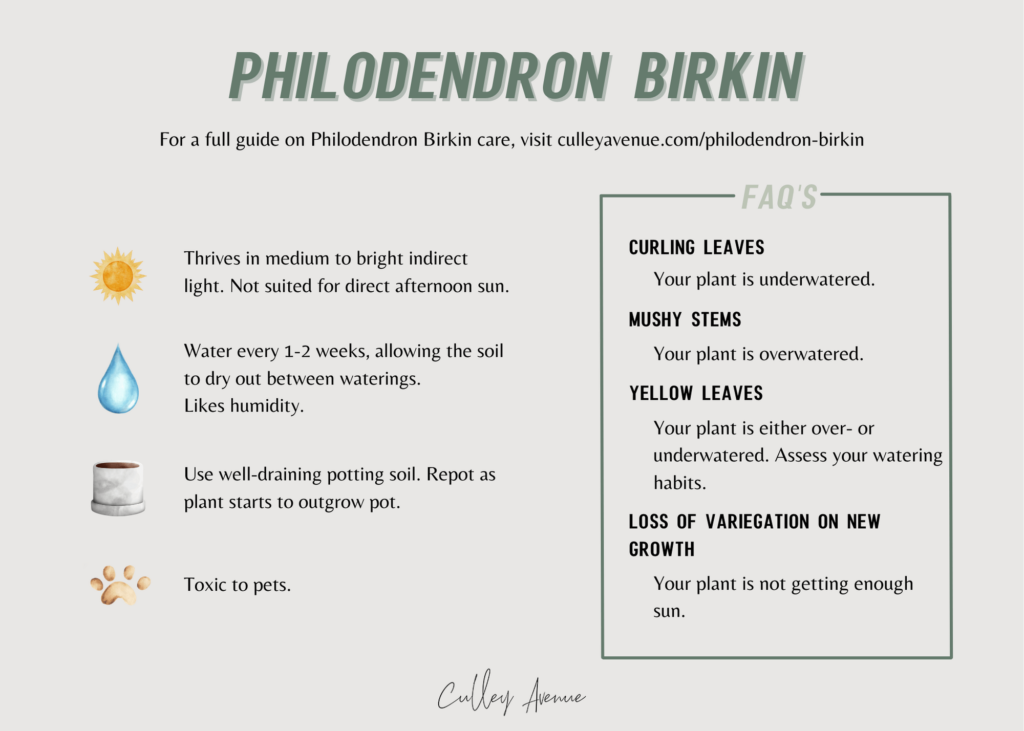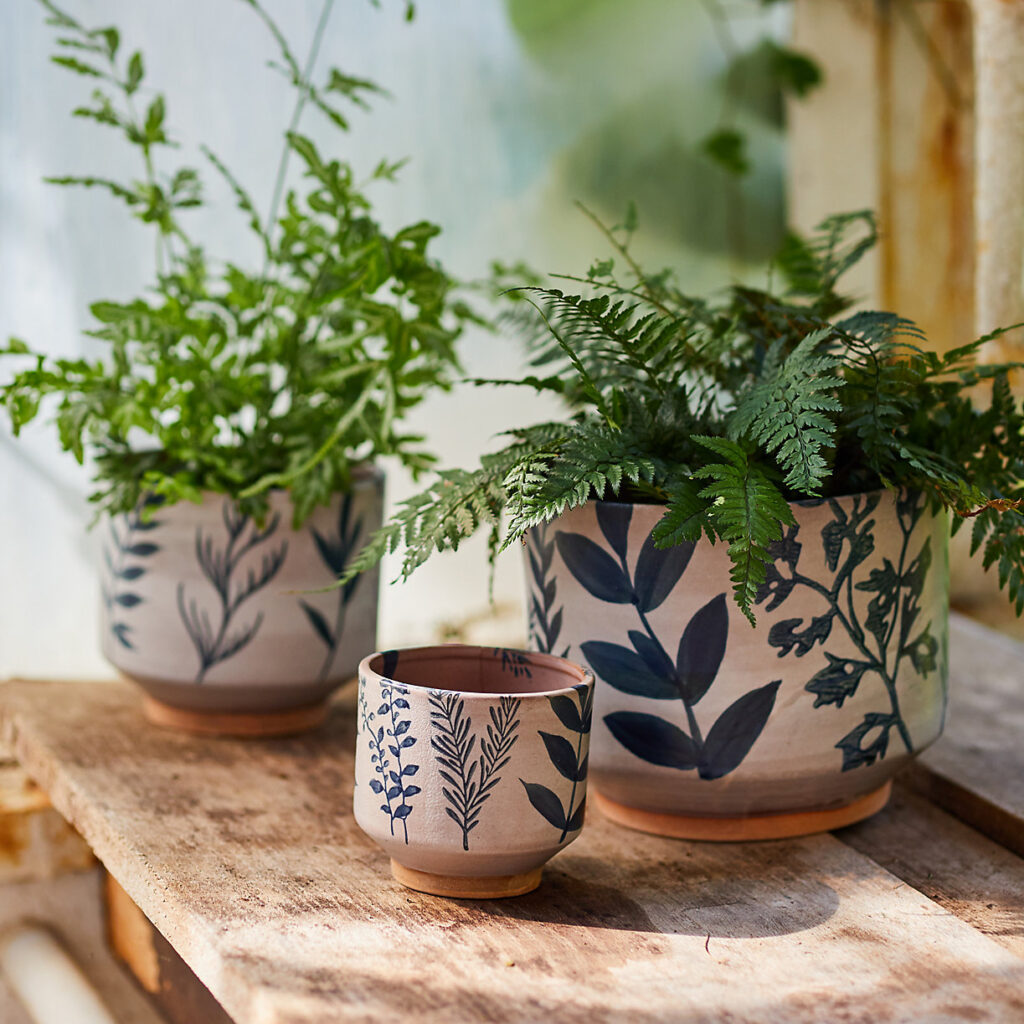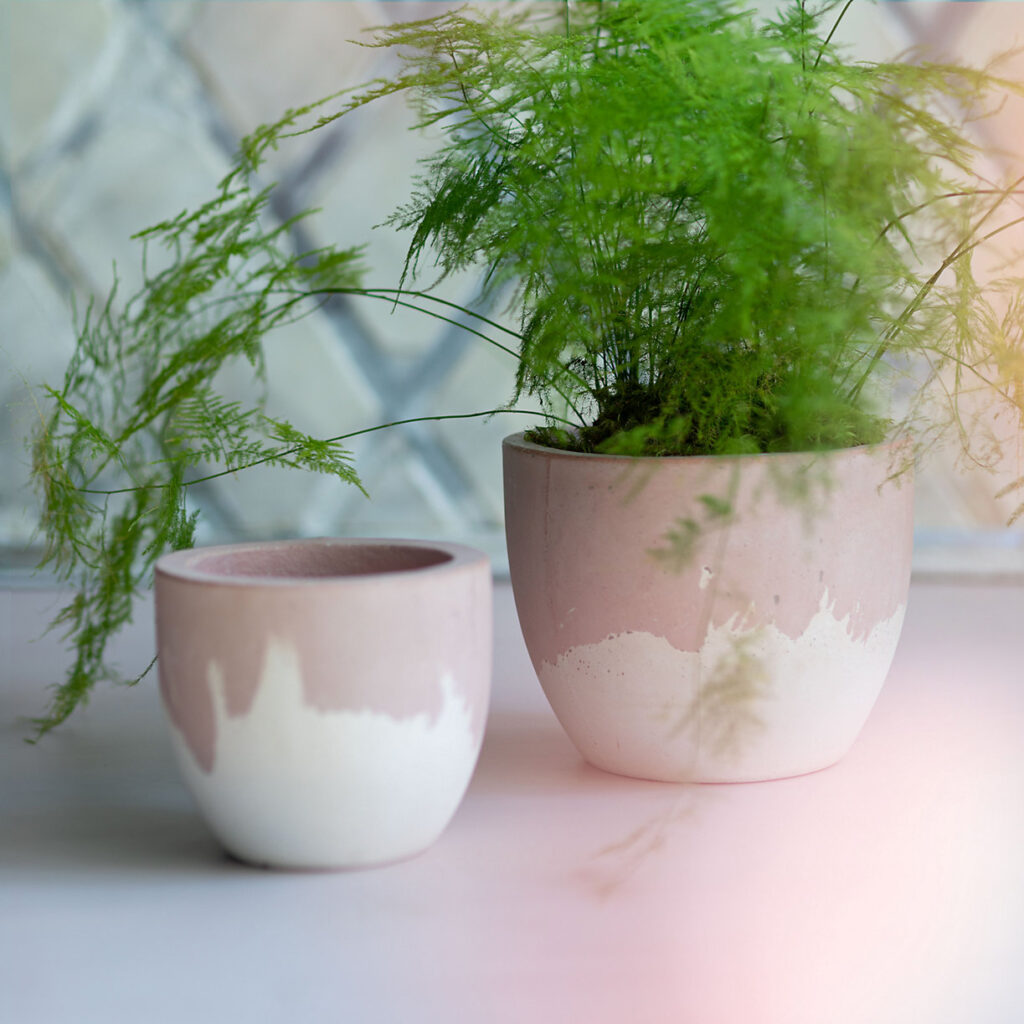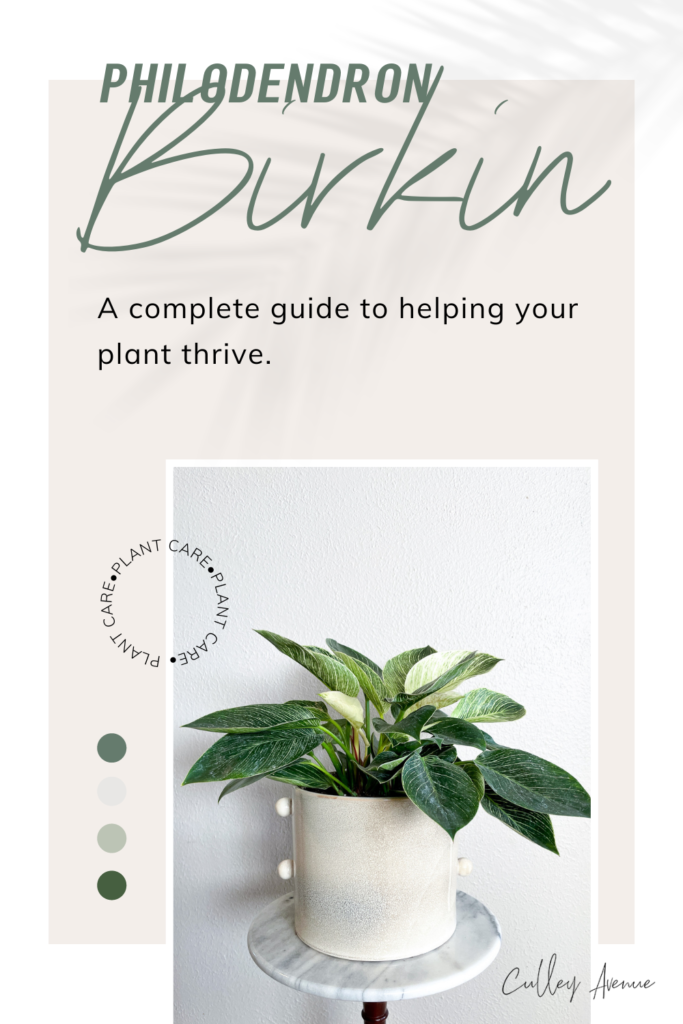
When I first heard that there was a plant out there with Birkin in its name, I knew I had to have it. Let’s be honest, owning a Philodendron Birkin might be the closest I ever come to owning a Birkin! (Of course, I am referring to the Hermès Birkin bag!)
Let me tell you, I am snobby when it comes to what my plants look like. Not just their health, which is obviously important, but how their aesthetic is going to fit into my home. Rest assured, the Philodendron Birkin lives up to its name.
The deep green leaves feature stunning pinstripes and variegation, which are always showcased because they sit on bright, thick stems. We love a plant that knows what its job is!
The best part about the Philodendron Birkin is that it is the perfect mix of elegance and style. Not to mention, they are extremely easy to care for. The only high-maintenance thing about this plant is its name.
Are you following me on LTK.it? I share all of my latest links to outfits and home decor there, check it out! As always, I truly appreciate your support!
Philodendron Birkin Care Snapshot
For a happy & healthy philodendron Birkin plant, this is the gist of what you need to know:
- Thrives in medium to bright indirect light. Not suited for direct afternoon sun.
- Water every 1-2 weeks, allowing the soil to dry out between waterings.
- Expect to water more often in brighter light conditions.
- Toxic to pets!
Ok, now you know the short version. But if you are a houseplant junkie like me, then you will want to know the details! So keep reading for a full guide on Philodendron Birkin plant care, plus what to do when it looks like you’re killing it. (And I don’t mean in a good way!)

Philodendron Birkin Care
This post contains affiliate links. If you make a purchase through one of my links, I may earn a small percentage of sales. As always, I only share things that I have tried & loved or that have amazing reviews on this blog. I truly appreciate your support!
What is a Philodendron Birkin?
The philodendron plant has been around for hundreds of years, but the Birkin variety is actually a hybrid and does not grow in the wild. If cared for properly, these plants can get up to 3 feet tall indoors.
Birkin plants are quickly becoming the new “it” plant. They are a great plant for an office or as a gift for a first-time plant owner. Or, if you’re like me, you just want to hoard these plants for yourself!
How To Care For A Philodendron Birkin Plant
Sunlight & Placement
These plants do not like direct sunlight or no sunlight, but pretty much anything in between is fair game. Just remember that the pinstripes perform best when your Philodendron Birkin is getting medium to bright indirect sunlight.
Soil
Philodendron Birkin plants do not require any type of special soil. Any well-draining potting soil will do.
Water & Humidity
The Philodendron Birkin is just as hardy as the rest of the philodendron species. Meaning, you really only need to water this plant every 1-2 weeks. Make sure to let the soil dry out between watering, but be sure to avoid the ring of death! (When the soil starts to separate from the edge of the pot due to lack of watering.)
Take it from me though, I’ve neglected my Birkins a time or two and they are still thriving.
This variety is a tropical plant so it does love humidity. But don’t worry if your home isn’t very humid. Mine are doing just fine! But there are always ways to add humidity to your plant.
Temperature
The average temperature of your home is just fine for your Philodendron Birkin. Just make sure to not place your plant outside during cold months when freezing temps are likely, and avoid placing your plant close to air vents.
Fertilizer
Can we be honest about fertilizer for a second? I’ve never fertilized my houseplants. (With the exception of my lemon tree!) So personally, and I’m no expert on plants, I don’t think it is necessary. But if you do, keep reading.
Philodendron Birkins can be fertilized once per month during their growing season which is spring & summer. Any houseplant fertilizer is fine.

Plant Care 101: How to Help Your ZZ Plant Thrive
ZZ plants are very common now due to their hardiness. They make great plants for an office or as a gift for a first-time plant owner. Or, if you’re like me, you just want to hoard these plants for yourself!
Common Philodendron Birkin Problems & FAQ’s
Even the most seasoned plant owners run into issues with their plants. So don’t worry if your Philodendron Birkin looks like it needs a little TLC, I’m here to help! Here are some of the most common problems and questions regarding your plant.
Why Are My Philodendron Birkin Leaves curling?
If the leaves of your Philodendron Birkin are curling, or are starting to wrinkle and wilt, then your plant is likely underwatered.
If this happens to you, prune all of the dead leaves to clean up the plant and promote new growth. Note: If more than 20% of your plant is covered in curling leaves then only remove a small portion at a time. Too much pruning can shock your plant.
To start your Philodendron Birkin on the road to recovery, be sure to set a reminder for yourself to water it regularly. Keeping a regular watering schedule helps the plant thrive.
Why Does My Philodendron Birkin Have Yellow Leaves?
As is the case with most plants, yellowing leaves can mean a few things. But first, make sure you prune the dead, yellowing leaves so that new growth can begin.
The first thing that you will want to check is that you are not overwatering your plant. Overwatering is the number one cause of yellowing leaves. And guess what? Underwatering is the second reason!
The best rule of thumb is to water your Philodendron Birkin every 1-2 weeks.
What If My Plant Isn’t Underwatered?
Another reason your Philodendron Birkin leaves may be starting to turn yellow is due to the quality of water. Regular tap water contains salts, chlorine, minerals, and fluoride. This can cause build-up in the plant’s soil.
Don’t worry though, the fix is simple. One option is to use filtered water from your fridge. The other option is to leave an open container (like a pitcher) of tap water sitting on the counter overnight. This will help some of the chlorine and minerals evaporate from your water.
Why are my Philodendron Birkin stems mushy?
You’ve loved your plant too hard! AKA, you’ve overwatered it. Let the soil dry out completely before watering.
Why is my Philodendron Birkin losing variegation on new growth?
If your Philodendron Birkin isn’t showing variegation on new leaves then it’s not getting enough sun. Move your plant to a brighter area.
I Think My Plant Has Bugs
First, wipe down all of the plant’s leaves with a mixture of water and mild soap. This will help dislodge the insects. Then spray your plant with neem oil as directed on the bottle. Neem oil is commonly used to kill houseplant pests.
Once you have gotten the pest problem under control, make sure to not overwater your plant. Pests commonly prefer wet soil.
How Often Should I Be Repotting My Plant?
Philodendron Birkins need to be repotted to promote growth. When your plant starts to outgrow its pot, it’s time to repot.
Looking for some pot inspiration? Check out some of my favorites below.




Are Philodendron Birkin plants toxic?
Yes, these plants are toxic to pets.
I hope that this Philodendron Birkin care guide has helped you even a little bit! Let me know how your plant is doing, or if you have any questions, in the comments below! Don’t forget to check out my houseplant section on the blog!




